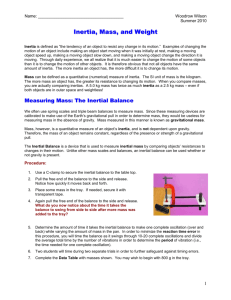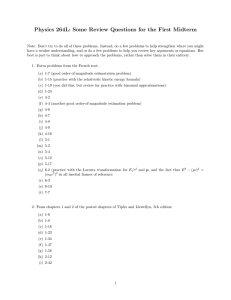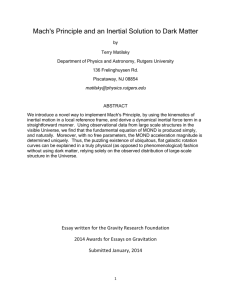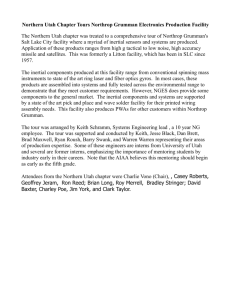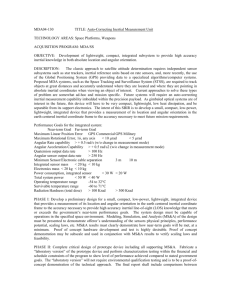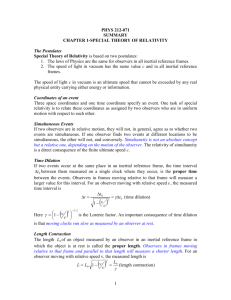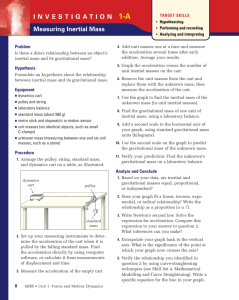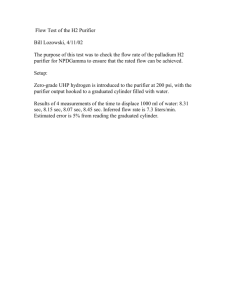Measuring Mass: The Inertial Balance
advertisement
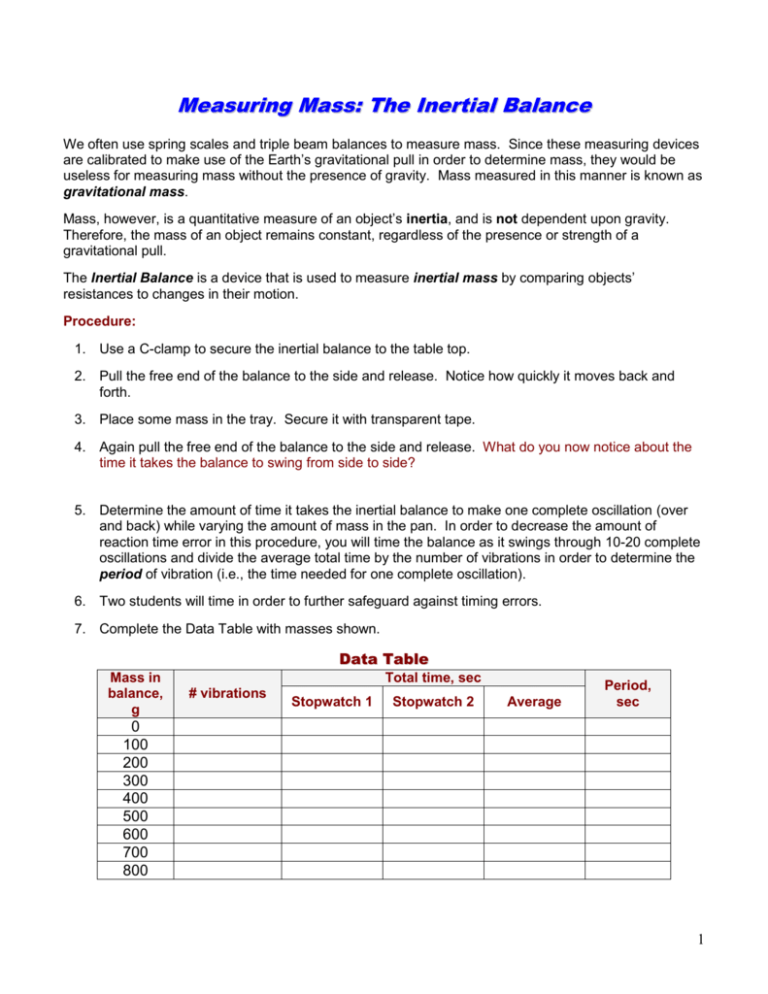
Measuring Mass: The Inertial Balance We often use spring scales and triple beam balances to measure mass. Since these measuring devices are calibrated to make use of the Earth’s gravitational pull in order to determine mass, they would be useless for measuring mass without the presence of gravity. Mass measured in this manner is known as gravitational mass. Mass, however, is a quantitative measure of an object’s inertia, and is not dependent upon gravity. Therefore, the mass of an object remains constant, regardless of the presence or strength of a gravitational pull. The Inertial Balance is a device that is used to measure inertial mass by comparing objects’ resistances to changes in their motion. Procedure: 1. Use a C-clamp to secure the inertial balance to the table top. 2. Pull the free end of the balance to the side and release. Notice how quickly it moves back and forth. 3. Place some mass in the tray. Secure it with transparent tape. 4. Again pull the free end of the balance to the side and release. What do you now notice about the time it takes the balance to swing from side to side? 5. Determine the amount of time it takes the inertial balance to make one complete oscillation (over and back) while varying the amount of mass in the pan. In order to decrease the amount of reaction time error in this procedure, you will time the balance as it swings through 10-20 complete oscillations and divide the average total time by the number of vibrations in order to determine the period of vibration (i.e., the time needed for one complete oscillation). 6. Two students will time in order to further safeguard against timing errors. 7. Complete the Data Table with masses shown. Data Table Mass in balance, g Total time, sec # vibrations Stopwatch 1 Stopwatch 2 Average Period, sec 0 100 200 300 400 500 600 700 800 1 8. Make a graph of “Period vs Mass” using the values determined in your trials. Draw a “smooth curve” through the data points. 9. Describe the shape of your graph. If possible, obtain its “best fit” equation. Now that you have calibrated your inertial balance, you can use it to determine the mass of other objects. 10. Place an object with unknown mass in your inertial balance and determine its period of vibration as before. “The total time for ____ vibrations was _______ sec, so the period = ______ sec.” 11. Use the graph to determine the best measure of this object’s inertial mass. Clearly display the unknown period and resulting mass on your graph. “According to my graph, an object with a period of ______ sec should have a mass of ______ grams.” 12. Now use a spring scale or triple beam balance in order to determine the object’s gravitational mass. “According to the scale, the mass of this object is _________ grams.” 13. Based on your results, make a statement comparing your object’s inertial and gravitational masses. You may be concerned that the weight of the objects influenced the period of vibration when using the inertial balance. In order to see if/how the weight of the object affects this experimental determination of an object’s mass, we can suspend the unknown mass cylinder though the hole in the pan using a light string. Since the pan no longer supports the mass, its period of vibration in the balance is entirely due to its inertia. We can then obtain its period when the mass is secured to the pan. Do both and compare results. cylinder suspended by pan: ______ sec for ______ cycles = period of ______ sec cylinder suspended by thread = ______ sec for ______ cycles = period of ______ sec How does the period obtained when the cylinder is suspended by a thread compare with its period when placed in the pan? List sources of error present in this activity. Extension: Use the inertial balance to determine the masses of several other objects and compare with values obtained from other mass measuring devices. 2 3
